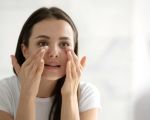- 1 - Understanding-Eye-Strain-in-Visual-Creatives
- 2 - Key-Causes-of-Eye-Strain-for-Photographers-Videographers
- 3 - Practical-Steps-to-Prevent-Eye-Strain
- 4 - Lifestyle-and-Environmental-Adjustments
- 5 - Personal-Experience-and-Professional-Advice
- 6 - How-Eye-Docs-Can-Support-Your-Eye-Health
1. Understanding Eye Strain in Visual Creatives
Photographers and videographers spend countless hours focused on screens, viewfinders, and intricate visual details. This intense visual concentration often leads to eye strain, a common but frequently overlooked problem in creative professions. Eye strain manifests as dryness, blurred vision, headaches, and discomfort, potentially impairing productivity and long-term eye health.
Recognizing how eye strain develops in this field is the first step toward prevention. Unlike casual screen use, professionals face extended periods of high-detail visual work, often under variable lighting conditions. This combination can exhaust the eye muscles responsible for focusing and adjusting to different stimuli.
1.1 Why This Matters for Photographers and Videographers
Maintaining healthy vision is critical to success in photography and videography. Small changes in sharpness, color accuracy, and detail recognition can significantly affect the quality of the final work. Thus, preventing eye strain not only protects your health but also enhances your professional output.
2. Key Causes of Eye Strain for Photographers and Videographers
Understanding the root causes helps target prevention efforts more effectively. The main contributors include:
2.1 Prolonged Screen and Viewfinder Use
Extended sessions focusing on digital screens or camera viewfinders force the eyes to maintain a fixed focus, causing muscle fatigue. Additionally, modern high-resolution displays can sometimes increase strain due to brightness and contrast settings.
2.2 Poor Lighting Conditions
Insufficient or overly harsh lighting during shoots can cause the eyes to work harder to adapt. For example, shooting indoors with inadequate ambient light while staring at bright screens can lead to rapid eye fatigue.
2.3 Lack of Regular Breaks
Ignoring natural rest periods denies the eyes a chance to recover. Continuous focus without breaks prevents eye muscles from relaxing, exacerbating strain over time.
3. Practical Steps to Prevent Eye Strain
Adopting a proactive approach can significantly reduce eye strain effects. Here are detailed strategies to implement:
3.1 Follow the 20-20-20 Rule
Every 20 minutes, look at something 20 feet away for at least 20 seconds. This simple habit helps relax the ciliary muscles responsible for focusing and reduces fatigue.
3.2 Optimize Screen and Viewfinder Settings
Adjust brightness to match ambient light and increase text or image size when possible to ease focusing effort. Using anti-reflective screen protectors can also minimize glare.
3.3 Use Proper Lighting
Ensure your workspace and shooting environment have balanced, soft lighting. Avoid stark contrasts between the screen and surrounding area to reduce eye adjustment demands.
3.4 Incorporate Eye Exercises
Simple exercises like blinking frequently to keep eyes moist or gently rolling eyes can stimulate circulation and alleviate tension.
4. Lifestyle and Environmental Adjustments
Beyond immediate workspace tweaks, broader lifestyle changes can promote long-term eye health for photographers and videographers.
4.1 Maintain Hydration and Nutrition
Proper hydration prevents dryness, while nutrients such as omega-3 fatty acids, lutein, and vitamins A, C, and E support eye function and protect against degeneration.
4.2 Regular Eye Check-ups
Routine examinations detect early signs of strain or other conditions. Professional advice tailored to your visual workload can include prescription lenses or protective eyewear.
4.3 Manage Screen Time Outside Work
Balancing leisure activities with reduced screen exposure and using blue light filters on devices can lessen cumulative eye strain.
5. Personal Experience and Professional Advice
Many photographers and videographers have shared stories about overcoming debilitating eye strain by integrating these techniques. For example, a renowned landscape photographer recounted how implementing scheduled breaks and improved lighting not only eased eye discomfort but also heightened creative focus during shoots.
Professional optometrists emphasize that personalized care is essential. Factors like individual eyesight, work habits, and environment all influence the best prevention methods. Hearing from specialists can provide targeted solutions that generic advice cannot match.
6. How Eye Docs Can Support Your Eye Health
If you want to take proactive steps in protecting your vision, Eye Docs offers expert guidance and tailored products designed for photographers and videographers. From blue light filtering glasses to ergonomic lighting solutions, their recommendations can significantly enhance eye comfort and reduce strain.
Combining your knowledge of how to prevent eye strain in photographers and videographers with Eye Docs’ trusted resources ensures your eyes stay healthy, allowing you to focus on your craft without discomfort.








